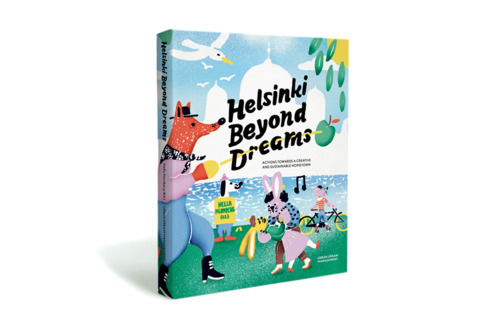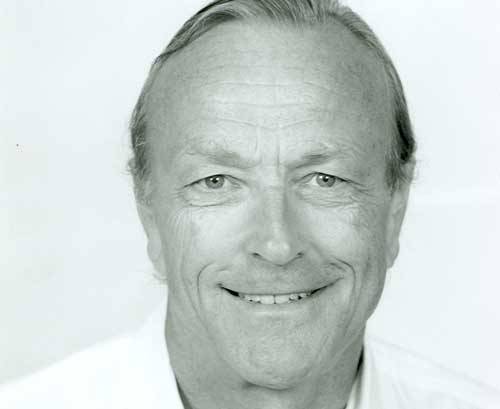
Open Source Cities
A global collection of the best ideas on the future of cities.
Search
Pages
Loading Tweet...
Links
Reyner Banham Loves Los Angeles
In this 1972 BBC Films production, architectural historian Reyner Banham takes the viewer on a tour of what he describes as the “four ecologies” of the city of Los Angeles: Surfurbia, Foothills, The Plains of Id, and Autopia (beach, basin, foothills, freeways). Noted for his seminal book of essays, Los Angeles: The Architecture of Four Ecologies, published the year before, Banham had a love affair with the City of Angels and its bold typologies. An Englishman in L.A., Banham exudes an almost giddy enthusiasm for the energy of the highway and celebrates qualities of the city often derided by critics of architecture and urbanism.
Banham stated “like earlier generations of English intellectuals who taught themselves Italian in order to read Dante in the original, I learned to drive to read Los Angeles in the original.” Driving in traffic on highway overpasses become an opportunity for unique bird-like perspectives on the city below, unavailable to the pedestrian, and vernacular architectural design is celebrated for its storybook qualities instead of derided or dismissed as trite. The combination of his formal eye and knowledge of cities as a historian combined with an infectious, optimistic enthusiasm for the kinetic, jazz-like qualities of the messy, sprawling glory of L.A. makes for an entertaining film and a captured moment in time in the history of the city.
Urban Mobility Salon

Open Source Cities is co-hosting a panel discussion and meetup on urban mobility, cities and the built environment in New York City on May 2nd from 4-6pm at the offices of BMW i Ventures. The event co-hosts are Green Parking Council, AECOM, BüroNY, and TimHaahs.
Presentations by:
John Schmid, Chairman, Green Parking Council
Joachim Hauser, BMW Mobility Services
Panel Discussion:
Susan Szenasy, Editor in Chief, Metropolis Magazine (Moderator)
Gisela Baurman, Büro NY
Dave Kooris, AICP, Vice President, Regional Plan Association
Gary Lawrence, Chief Sustainability Officer, AECOM
John Parkinson, Director, Urban Land Institute
Jim Zullo, AICP, PE, Vice President, TimHaahs Associates
Limited space available, please RSVP to: salon@greenparkingcouncil.org
How To Live In A City (1964)
A quirky documentary on urban living and placemaking, How to Live in a City (1964) was produced in cooperation with The University Council on Education for Public Responsibility. The Council, which operated from 1961 to 1975, funded a successful project on urbanism, examining the positive and negative aspects of the American city, resulting in a nationally televised series and a book of selected readings.
From the film’s current distributor:
Have you ever wondered what makes some cities better than others? In public access television pioneer George C. Stoney’s How to Live in a City, the argument is that it all depends on the quality of the public space.
New York City folk singer and architectural critic Eugene Ruskin guides us through unique locales which illustrate the fine line between organic and sterile urban spaces. It all depends on a place’s ability to attract and sustain, even if only momentarily, a sense of community.
And while some spaces succeed and others fail, one may wonder whether if it was designer’s intention to drive people away, or not.
Helsinki Beyond Dreams

Helsinki Beyond Dreams, a new book of essays published in conjunction with World Design Capital Helsinki 2012, explores the emerging experimental urban culture in the Finnish capital. Recently cited as the world’s most liveable city by Monocle, Helsinki is enjoying a surge of interest in grassroots urbanism, sustainability initiatives, design explorations and cultural experiments.
Read more
Open Innovation for Cities: An Interview with Sascha Haselmayer

Open Source Cities spoke with Sascha Haselmayer, General Director and Co-Founder of Living Labs Global about the Living Labs Global Award and incentivizing service innovation in cities through competitions and open source citizen engagement.
Background
The Living Labs Global Award is an open competition for technology solutions to urban challenges posed by a group of global cities. Finalists are selected and showcased on CityMart, a growing online marketplace of ideas, applications and urban strategies available for any city to copy or adapt. In 2012, the awards ceremony will be held in Rio de Janeiro in conjunction with the Rio Summit on Service Innovation in Cities.
The Living Labs Global Award is very impressive and ambitious in scope, with a large number of countries included in the program. How did Living Labs Global develop the format and concept for the competition?
In 2008 we put the first Showcase online – 35 solutions that could help cities, since there seemed to be no other resource. Thousands of users from around the world were accessing this simple catalogue. At the same time, our work in Living Labs Global focused on helping high impact technologies spread across cities and we found the same disconnect over-and-over: cities do not announce their problems, and as a result innovative businesses do not find the market with the right need among the 557,000 communities around the world.
Read more
Block by Block: Cities Tackle Big Problems With Small-Scale Solutions

By JESSIE FELLER, Regional Plan Association
The world’s biggest cities are discovering that it sometimes makes sense to go small.
Urban centers from New York to Sao Paulo to Singapore are grappling with big challenges, including climate change, population growth and fiscal constraints. Rather than addressing these issues solely with large, centralized strategies, some are turning to more diffuse approaches. So-called micro-solutions — which might mean relying on green infrastructure instead of a new water-treatment facility, or implementing car- and bicycle-sharing in place of a highway expansion — are generally much cheaper and faster to implement. They have the added benefit of reducing greenhouse-gas emissions.
Read more
TED Prize 2012: Crowdsourcing “City 2.0”

Today, TED announced the winner of the 2012 TED Prize: the City 2.0. Breaking from their tradition of recognizing an individual global innovator, TED is embracing the concept of crowd-sourcing urbanism (an idea we obviously support at Open Source Cities). The organizers published this call-to-arms in seeking ideas on the City 2.0:
“The City 2.0 is the city of the future … a future in which more than 10 billion people on planet Earth must somehow live sustainably, together. The City 2.0 is not a sterile utopian dream, but a real-world upgrade tapping into humanity’s collective wisdom. The City 2.0 promotes innovation, education, culture and economic opportunity. The City 2.0 reduces the carbon footprint of its occupants and eases the environmental pressure on the world’s rural areas. The City 2.0 is a place of beauty, wonder, excitement, inclusion, diversity, life. The City 2.0 is the city that works.”
There are a number of provocative assumptions in this paragraph that should make for interesting dialogue in the months ahead leading up to the TED Conference in Long Beach, CA and its sister event TEDActive in Palm Springs, CA. You can share your ideas on the City 2.0 with the TED Community here. We look forward to the conversation!
Beyond Smart Cities: An Interview with Tim Campbell Part I

Open Source Cities (OSC) spoke with Tim Campbell, Chairman of the Urban Age Institute about his new book Beyond Smart Cities. This is part one of a two-part interview OSC is conducting in association with the Meeting of the Minds 2011 gathering.
Background
Tim Campbell has worked for almost four decades in urban development with experience in scores of countries and hundreds of cities in Latin America, South and East Asia, Eastern Europe, and Africa. His areas of expertise include strategic urban planning, city development strategies, decentralization, urban policy, and social and poverty impact of urban development.
Prior to his current position at The Urban Age Institute, Tim spent more than 17 years at The World Bank, working in various capacities in the urban sector. He was the head of the World Bank Institute urban team and also led the Urban Partnership, which was responsible for identifying changing demand and developing new Bank products and services for cities.
Read more
Metropolis II
“It’s about to be over, the idea that the car runs free, those days are about to close.” Conceptual artist Chris Burden created this kinetic sculpture to “provoke the energy of a city.” Says Burden, “The noise, the continuous flow of the trains, and the speeding toy cars, produces in the viewer the stress of living in a dynamic, active and bustling 21st Century city." Metropolis II will be on display at LACMA in the Fall of 2011.
Filmed in 2011 at the artist’s studio in Topanga, CA. Directed by Henry Joost & Ariel Schulman of Supermarché.